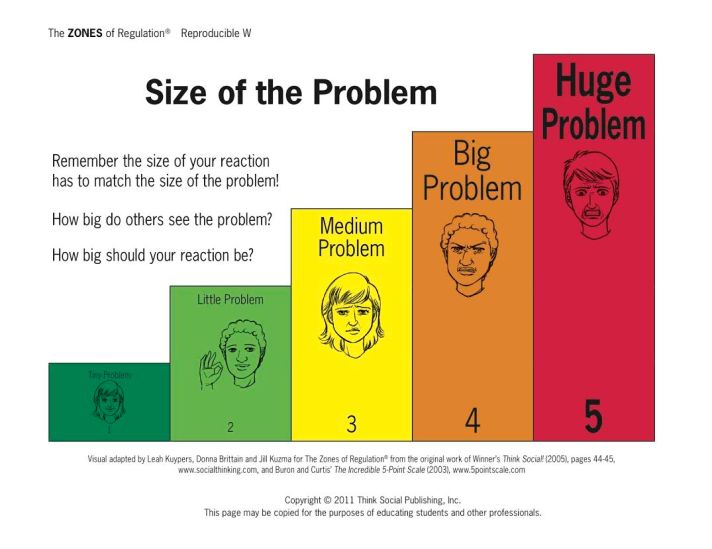The American School Counseling Association model for counselors’ time with students is broken into three categories: classroom, small groups and individuals. In Fletcher, I use a curriculum entitled, “The Zones of Regulation.” Written and created by Leah M. Kuypers, it was designed as a curriculum to foster self-regulation and emotional control in students. It is published in conjunction with a series of Social Thinking books written by Michelle Garcia Winner. Additionally, it was first recommended to me by Joelle Van Lent, a psychologist hired by our district to consult with schools as we become more trauma informed. I began using the curriculum last year and immediately became impressed in its ability to give students a structure for expressing and regulating their emotions. Currently, I am using various aspects of the curriculum with the Kindergarten class, children in small groups ranging in age from first to fourth grades and several individual students. I have also had the privilege of explaining its concepts to many teachers, staff and parents of FES.

The basis of the curriculum is that we all have four zones of regulation that we are in at different times: Blue Zone, Green Zone, Yellow Zone and Red Zone. We are in the Blue Zone when we feel sad, sick, bored or tired. We are in the Green Zone when we are feeling happy, calm, focused and ready to learn. Yellow Zone is when we are feeling frustrated, worried or silly and are starting to lose self-control. Finally, the Red Zone is when we are really mad, terrified or out of control. The first half of the curriculum focuses on helping students to recognize when they, or those around them, are in the various zones. They learn about how people look and feel in their bodies when they are in different zones. Additionally, although it is normal to sometimes be in any of the zones, students are taught when we would expect people to be in each zone. They discover that the Green Zone is the optimal zone to be in most of the time at school because it’s when we are best able to learn. The second half of the curriculum is designed to introduce students to several types of strategies, or “tools,” that people might use in different zones. They might use “sensory, calming down, or thinking tools” in order to help them return to the Green Zone. After learning about many different tools, students create “toolboxes” of strategies that might work best for them.

“If you see someone that is in one of the sad or mad zones you can help them get happy by trying to get them to the green zone,” third grader Emma Spiller said. “To get somebody into the green zone you can try to cheer them up and talk to them. We learned how to tell what zone someone is in or that we are in and how to keep in the green zone, which is the best zone.”
“I use the zones to help me calm down,” fourth grader Chase Murray said. ” If I’m in the red zone I can do things like go to a private space or quiet area and that can help get to the green zone.”
“To get out of the blue zone, and help focus, you can sit up straight, take a little walk, get a drink of water, and that can help you get back to work,” fourth grader Jack Packard said.
“To stay in the green zone and stay calm and focused I listen to instructions and sometimes move around a little that helps get energy out,” fourth grader Logan King said said.

It has been wonderful to witness the emotional growth that I have seen in many students through the use of this curriculum. The entire Kindergarten class is now able to express a feeling or energy level by stating their zone. One student who I have met with individually for a couple of years is now able to keep himself in the Green Zone by using a tool called “The Inner Coach.” Several of my groups have been creating, drawing and naming characters to describe the inflexible thinking that might keep them out of the Green Zone. I am excited to continue to use this curriculum with more and more students at FES in a variety of settings. I look forward to seeing not only their emotional growth, but also the social and academic growth that will result from staying Green!
Target 1 – Student-Centered Learning – FWSU students will engage in personalized learning involving collaborative inquiry, problem solving and creative learning opportunities.
Action Step – Highlight, create and model innovative learning opportunities that promote collaborative inquiry, problem solving and creativity for students and staff.
Indicator of Success – Teachers embrace role of coach, facilitator and co-learner in a student-centered learning environment.

Sandi Simmons is a School Counselor at Fletcher Elementary. This is her first contribution to the FWSU Blog.

Self-regulation is a complex process. The intentional planning and teaching that FES puts into this important work is a tremendous investment in student learning success. Great work!
LikeLiked by 1 person